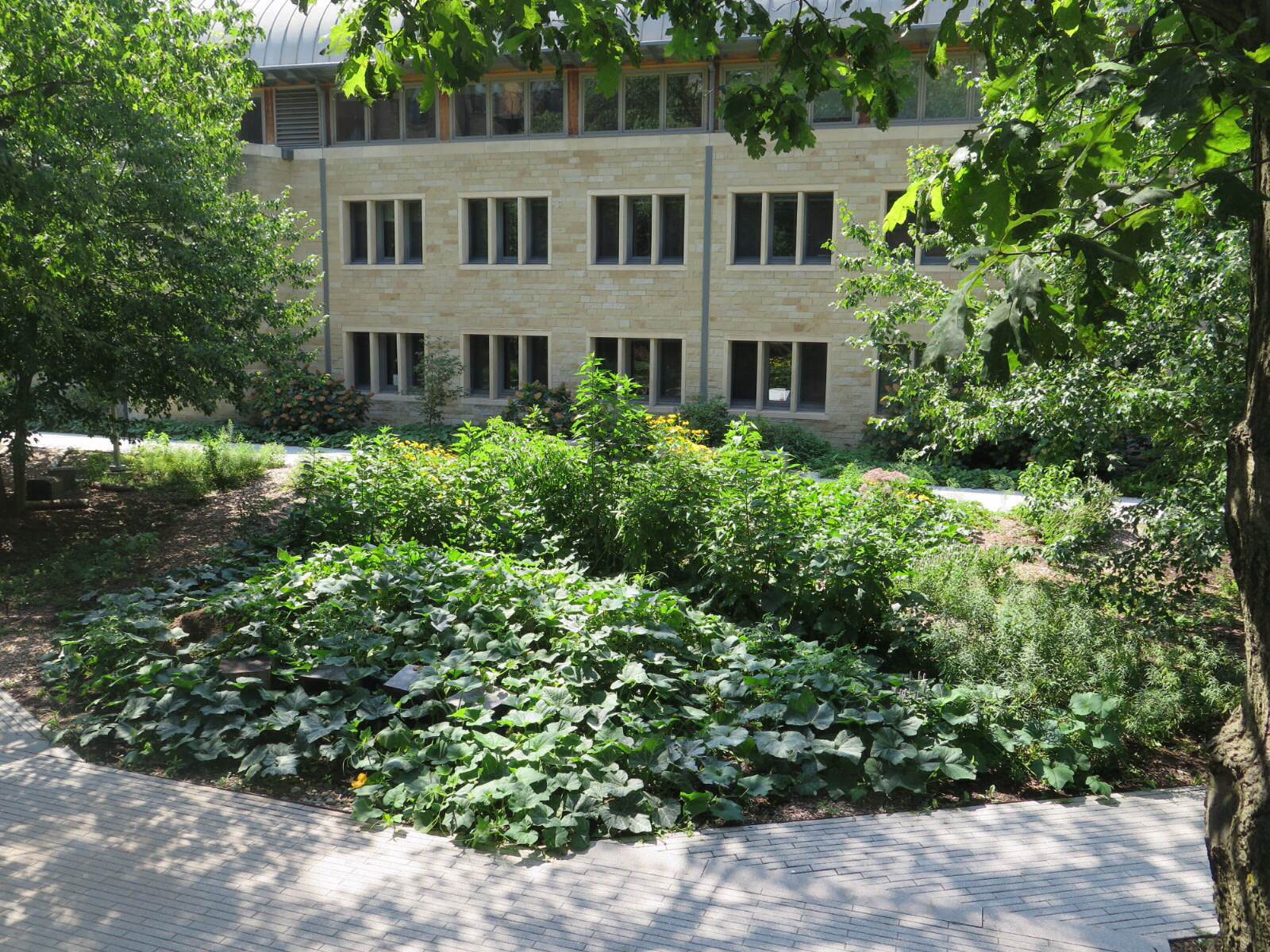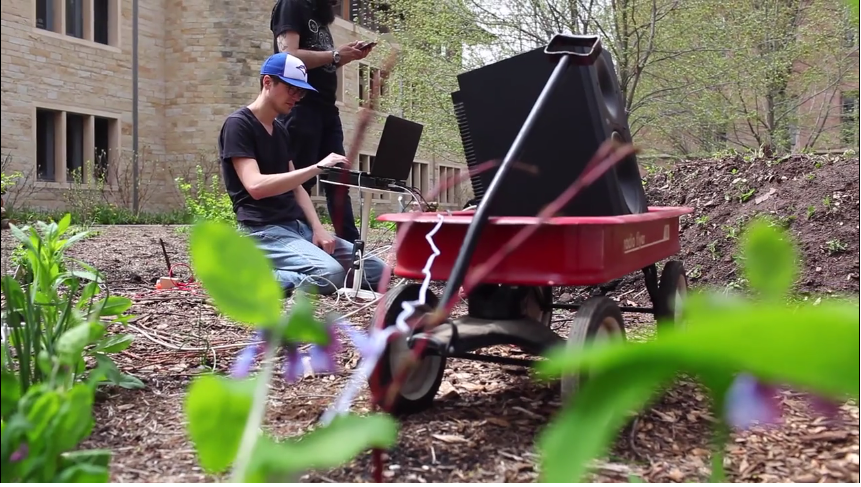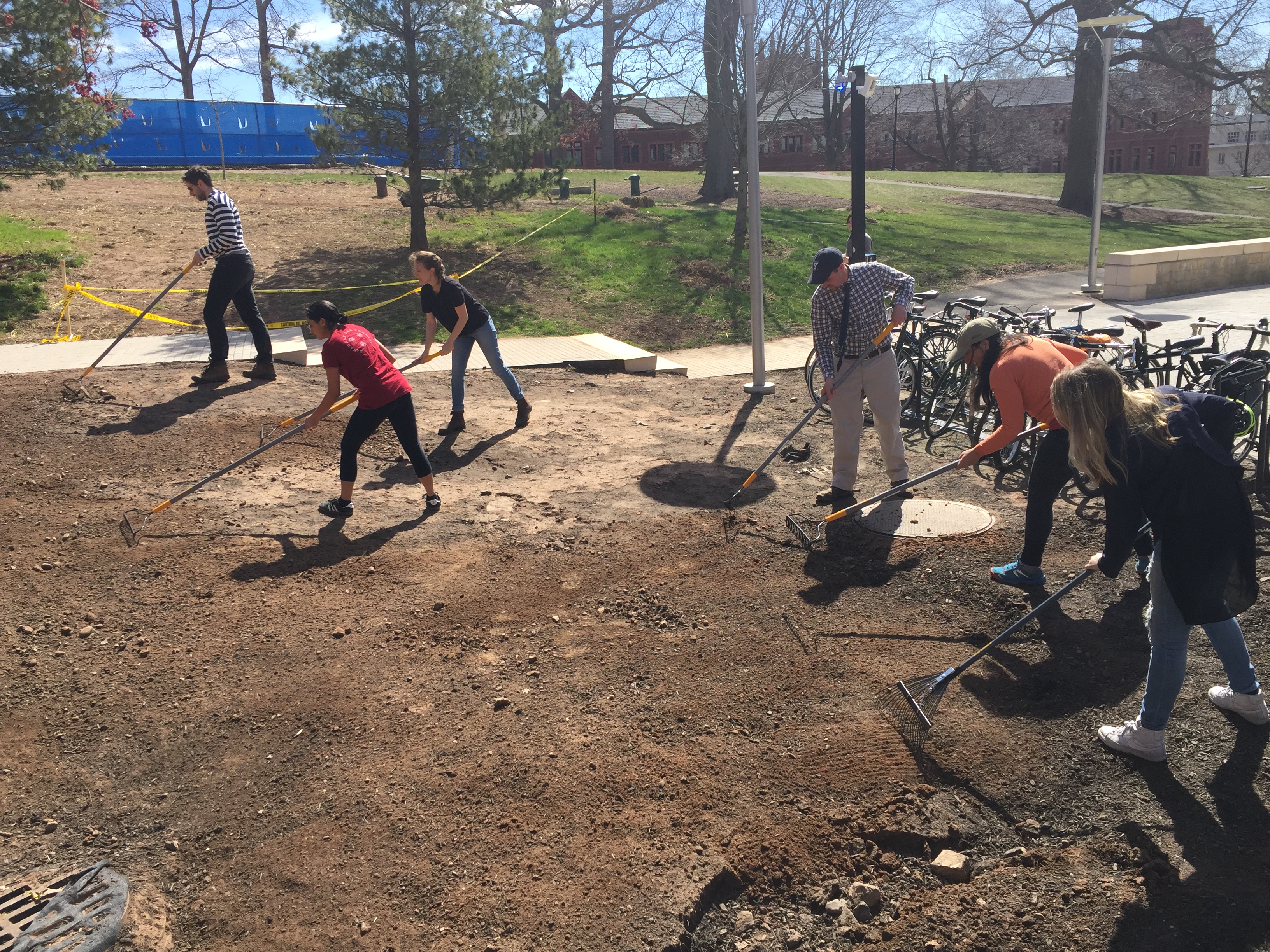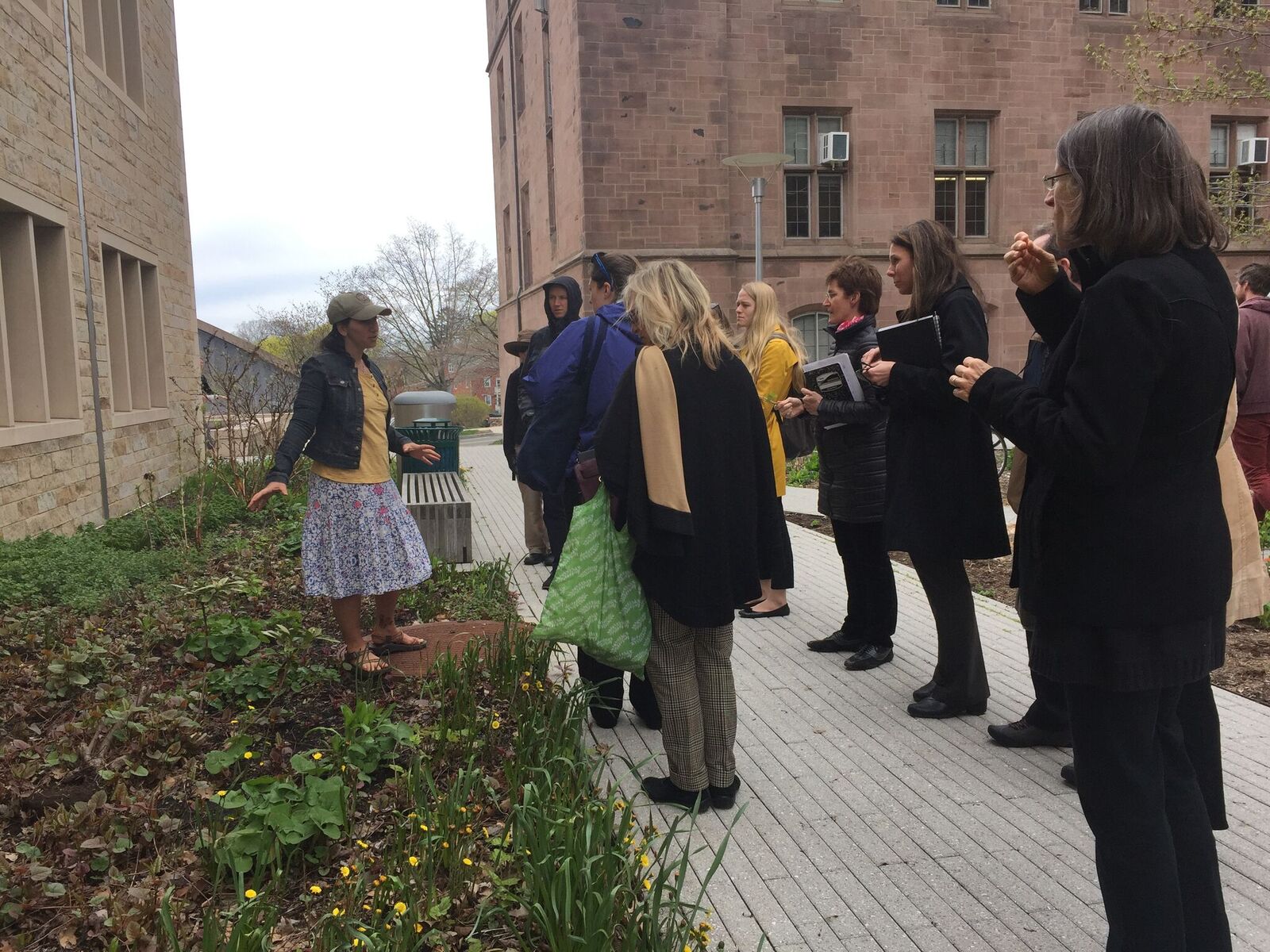What does a university landscape look like? What does it feel like? And what does it accomplish?
Google image search the terms ‘college campus’ and you’ll get a good sense for what we collectively think the university landscape looks like. Pages and pages of results return images of sprawling lawns dotted with occasional ornamental trees; some images are entirely devoid of people, some show people walking across or through the landscape, and just a few might show a student or two sitting or lying on the ground. Beyond this, there is not a single image in the first 10 pages of Google results that show people interacting with the plants in the university landscapes that surround them.
The way university landscapes look—often by their very design—elicit particular feelings and worldviews about how successful, educated human beings interact with their environments. Indeed, non-interaction is regularly the assumed status quo in the relationships that students, faculty, and visitors have with the college campus. University landscaping tends to feel ornamental, with plants carefully placed to serve as a background to lives and activities otherwise separated from their immediate environments.
What does managing our university landscapes in this way ultimately accomplish?
Landscapes hold great power to change, both directly and indirectly, the ways in which people view and interact with the natural world. Universities in particular are unique spaces in which people solidify or change these views and patterns of interaction. College campuses are, in a sense, incubator spaces, where people—primarily younger people—gather to engage in concentrated learning and gain exposure to new ways of placing themselves in an evolving world.
When we place landscaping as a background during these formative years, we signal that it isn’t an important part of the university experience. We signal that our immediate natural surroundings are not integral to the success and opportunity that higher education promises. In so doing, we miss a tremendous opportunity to imbue the leaders and decision-makers of tomorrow with an experiential ethic of stewardship, of positive environmental interaction, and of belonging to an interconnected web of socio-ecological interactions.
What if university landscaping endeavored to be more multifunctional? What if everybody—no matter their field of study—felt empowered to tend and interact with their natural surroundings? What if there was a role for agroforestry in universities not simply as a subject of instruction but as a principle for landscape design?
At Yale University, we are starting to explore some of those questions. The Yale Agroforestry Collaborative—comprised of a dedicated group of students, faculty, and staff members—is a group that seeks to promote the study and practice of agroforestry on the Yale campus itself. We currently manage four on-campus agroforestry sites that all offer regular opportunities for interaction: a community food forest on the central campus (Figure 1), an agroforestry berm at the Yale Farm, a 20-acre experimental agroforestry site at the Yale Landscape Lab, and a forest orchard and understory edible garden at the Yale-Myers Forest.
 Figure 1. The Yale Community Forest Garden in June 2017.
Figure 1. The Yale Community Forest Garden in June 2017. We work together to weave the care of these sites into the fabric of university life; every week there are opportunities for students, faculty, staff and community members to participate in an agroforestry-related event, be it planting seeds, harvesting fruits, inoculating logs, digging swales, or learning how to prepare and use a hyper-local agroforestry product (Figure 2a, 2b). We also offer these spaces for other uses, hosting art installations, interdisciplinary collaborations, performances, and social gatherings, helping people who are not primarily interested in forestry or farming see how agroforestry can still be integral to their interests (Figure 3). We engage the Yale Grounds Crew in the co-stewardship of spaces, sharing best practices, knowledge, labor, and materials. We encourage faculty to use these spaces as outdoor classrooms, and have several active formal courses and research projects in progress across these areas.
 Figure 2a. Students planting edible fall bulbs in the Yale Community Forest Garden
Figure 2a. Students planting edible fall bulbs in the Yale Community Forest Garden Figure 2b. Learning to tap maple syrup in an outdoor classroom at the Yale Landscape Lab Experimental Agroforestry Site, with Director Justin Freiberg
Figure 2b. Learning to tap maple syrup in an outdoor classroom at the Yale Landscape Lab Experimental Agroforestry Site, with Director Justin Freiberg  Figure 3. School of Drama student Christopher Ross-Ewart and School of Art student Raul Romero setup an interdisciplinary art installation in the Community Forest Garden. Plants in the garden were attached to sensors, which translated different plant activity into sounds visitors could listen to on speakers and through headphones. More information at: http://environment.yale.edu/news/article/what-do-plants-sound-like-plants-and-the-audible-spectrum/
Figure 3. School of Drama student Christopher Ross-Ewart and School of Art student Raul Romero setup an interdisciplinary art installation in the Community Forest Garden. Plants in the garden were attached to sensors, which translated different plant activity into sounds visitors could listen to on speakers and through headphones. More information at: http://environment.yale.edu/news/article/what-do-plants-sound-like-plants-and-the-audible-spectrum/ Most excitingly, we receive requests from across the university—from student housing, to health services, to human resources—seeking guidance on how to incorporate agroforestry into their respective domains (Figure 4). To meet this demand, we are working with our university-wide Office of Sustainability to help draft a comprehensive landscaping plan, specifically to include guidelines for establishing and maintaining multifunctional and interactive landscapes.
 Figure 4. Students working with the head of Yale Grounds to convert a post-construction site to a multifunctional medicinal meadow
Figure 4. Students working with the head of Yale Grounds to convert a post-construction site to a multifunctional medicinal meadowThe time is clearly ripe for further exploration of how agroforestry design can help transform college campuses, and in turn, the thoughts and behaviors of people within them. Thinking creatively about how to employ agroforestry in the context of the university itself offers exciting ways of furthering the study, acceptance, and impact of these valuable practices.
 Figure 5. Yale Agroforestry Collaborative Co-Founder Emily Sigman giving a talk on multifunctional landscaping to sustainability professionals from across the university
Figure 5. Yale Agroforestry Collaborative Co-Founder Emily Sigman giving a talk on multifunctional landscaping to sustainability professionals from across the university